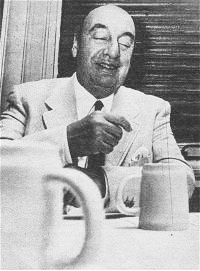The Lively Foundation is proud to announce the release of The Story of Our Butterflies: Mourning Cloaks in Mountain View, the new book by Leslie Friedman. It is a beautiful book with many full color, often full page photographs by Jonathan Clark and Leslie Friedman.
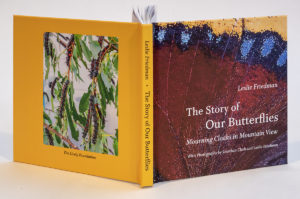 Front cover is a close up of the wing of a Mourning Cloak butterfly. Back cover shows Mourning Cloak caterpillars devouring willow leaves.
Front cover is a close up of the wing of a Mourning Cloak butterfly. Back cover shows Mourning Cloak caterpillars devouring willow leaves.
The story begins when Mr. Clark and Ms Friedman observe a butterfly lingering on a tiny branch of a pussy willow tree. They see that the butterfly has lain eggs and bring the twig inside to protect the eggs from predators. The story continues through all the stages of life: egg, about five different stages of caterpillar, butterfly. More than 125 butterflies were released in nature preserves. The continual and rapid growth of the caterpillars, their vigorous appetites, the beauty of the butterflies make a suspenseful and engaging tale,
The book explores the relationship of human cultures to butterflies through Chinese legends, Shakespeare’s plays, American pop music. It reveals the desperate plight of all butterflies as the climate changes. There are fascinating Appendices which include an array of butterfly information: how a border wall between the US and Mexico endangers butterfly existence; how to say “butterfly” in many languages; how butterflies symbolize hope for diverse individuals and groups. Questions are answered: does the woolly bear predict weather like an insect version of the groundhog? Did Nathaniel Hawthorne write about butterflies and happiness?
CHRISTMAS IS (always) COMING! Remember books from The Lively Foundation: beautiful to look at, enlightening and entertaining to read. Great for birthdays, Mother’s Day, everyday when you want to read a great book. Be cozy this Christmas: shop from home and let Lively package and send your gifts. Ways to buy this book are listed below this picture.
!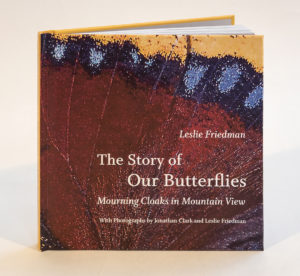
The Story of Our Butterflies: Mourning Cloaks in Mountain View is available now from The Lively Foundation. Two ways to order it:
#1) Make your check for $36 to The Lively Foundation and mail it to The Lively Foundation/550 Mountain View Avenue/Mountain View, CA 94041-1941 Price includes postage.
#2) If you prefer to use PayPal instead of a personal check, please add $1.25 for a total of $37.25. Go to the landing page of this site, scroll down to see the DONATE button, click on that, follow PayPal’s directions. Price includes postage.
#3) Hand-delivered book cost is $29.95.
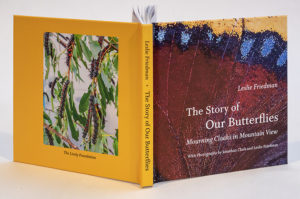 The Story of Our Butterflies: Mourning Cloaks in Mountain View, cover: close up of a Mourning Cloak wing front, caterpillars eating on back
The Story of Our Butterflies: Mourning Cloaks in Mountain View, cover: close up of a Mourning Cloak wing front, caterpillars eating on back J
J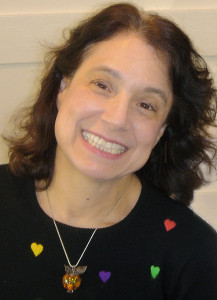 Jonathan Clark, better known as a photographer and fine art printer, will read the role of Danny. Leslie Friedman, better known as a dancer/choreographer, will read the role of Lily.
Jonathan Clark, better known as a photographer and fine art printer, will read the role of Danny. Leslie Friedman, better known as a dancer/choreographer, will read the role of Lily.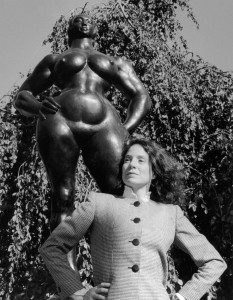 Leslie Friedman – best known as a dancer- is the playwright of The Exhibitionist.
Leslie Friedman – best known as a dancer- is the playwright of The Exhibitionist.  Shambhavi Dandekar
Shambhavi Dandekar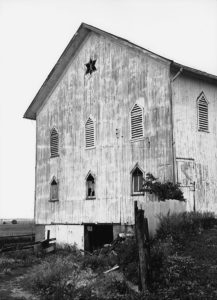
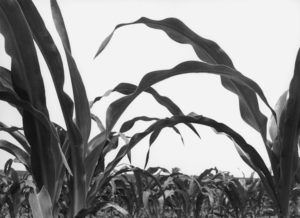
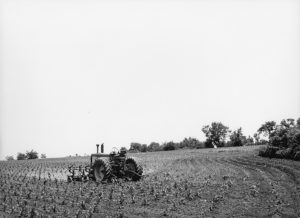
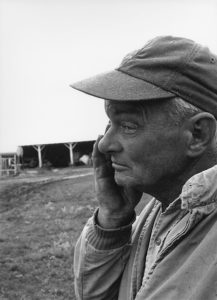
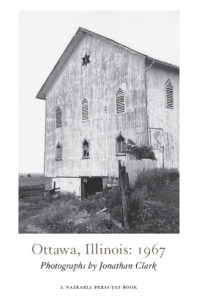 OTTAWA, ILLINOIS: 1967 Photographs by Jonathan Clark, published by Nazraeli Press. This award winning book presents photos of the small town the artist lived in for his first 10 years. He took the pictures when 15 years old. Like the Mozart of photography, his art was already outstanding. Ottawa still exists, but the way of life there is different. You will see a time that is gone in meaningful, beautiful photographs.
OTTAWA, ILLINOIS: 1967 Photographs by Jonathan Clark, published by Nazraeli Press. This award winning book presents photos of the small town the artist lived in for his first 10 years. He took the pictures when 15 years old. Like the Mozart of photography, his art was already outstanding. Ottawa still exists, but the way of life there is different. You will see a time that is gone in meaningful, beautiful photographs.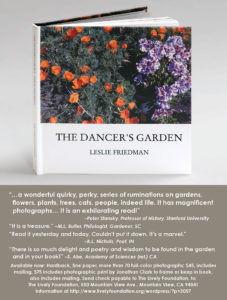 THE DANCER’S GARDEN, This beautiful book has text and photos by Leslie Friedman with additional photos by artist Jonathan Clark and one by Dennis Parks, English actor. Review and comments on this book call it “a treasure,” “a marvel,” and “a wonderful quirky, perky series of ruminations on gardens, flowers, plants, trees, cats, people, indeed life. It has magnificent photographs…It is an exhilarating read!”
THE DANCER’S GARDEN, This beautiful book has text and photos by Leslie Friedman with additional photos by artist Jonathan Clark and one by Dennis Parks, English actor. Review and comments on this book call it “a treasure,” “a marvel,” and “a wonderful quirky, perky series of ruminations on gardens, flowers, plants, trees, cats, people, indeed life. It has magnificent photographs…It is an exhilarating read!”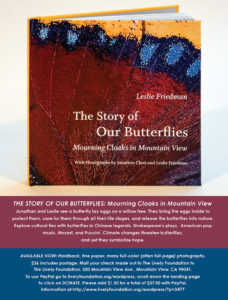 THE STORY OF OUR BUTTERFLIES: Mourning Cloaks in Mountain View, Text by Leslie Friedman with photos by Jonathan Clark and Leslie Friedman. Jonathan and Leslie see a butterfly lay eggs on a willow tree. They bring the eggs inside to protect them, care for them through all their life stages, and release the butterflies into nature. Explore cultural ties with butterflies in Chinese legends, Shakespeare’s plays, American pop music, Mozart and Puccini. Climate change threatens butterflies and yet they symbolize hope.
THE STORY OF OUR BUTTERFLIES: Mourning Cloaks in Mountain View, Text by Leslie Friedman with photos by Jonathan Clark and Leslie Friedman. Jonathan and Leslie see a butterfly lay eggs on a willow tree. They bring the eggs inside to protect them, care for them through all their life stages, and release the butterflies into nature. Explore cultural ties with butterflies in Chinese legends, Shakespeare’s plays, American pop music, Mozart and Puccini. Climate change threatens butterflies and yet they symbolize hope.

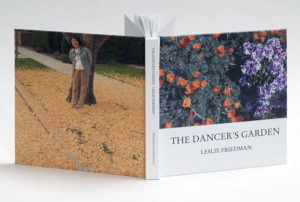 The Dancer’s Garden, published in 2019, is available from The Lively Foundation and the Stanford Bookstore.
The Dancer’s Garden, published in 2019, is available from The Lively Foundation and the Stanford Bookstore. 


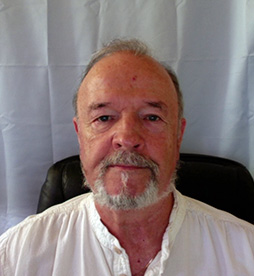
 Readers from top L: Pam Wong (The Young One), Laurie Mokriski (The White Ethnic Dancer), Torey Bookstein (The Great One, and The Jive Person), Paul Harkness (The Old One), Jonathan Clark (The Film Guy), Susannah Wood (The Moderator).
Readers from top L: Pam Wong (The Young One), Laurie Mokriski (The White Ethnic Dancer), Torey Bookstein (The Great One, and The Jive Person), Paul Harkness (The Old One), Jonathan Clark (The Film Guy), Susannah Wood (The Moderator).
